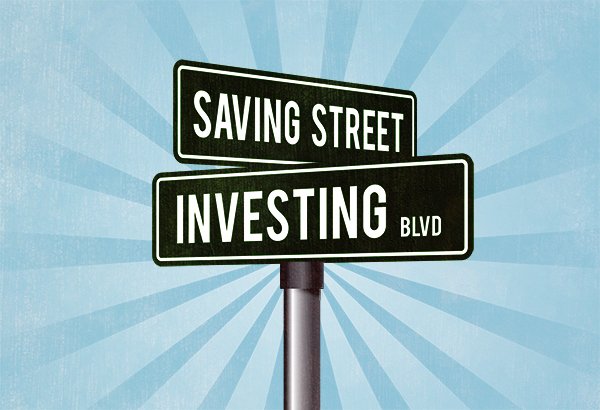Investing in Crypto? Don't forget about the "Get Rich Slow" method.

Warren Buffett calls it the "Get Rich Slow" method. What is it? It's rather simple. Invest a set amount each month into low cost index funds that track the performance of markets around the globe (with an emphasis on the U.S. Broad Market). It's a method that is tried and true, so it may be worth your time to consider.
Investing news has been filled with stories of huge gains and fortunes resulting from skyrocketing prices of cryptocurrencies. Who wouldn't want to be able to invest a few hundred dollars and in just a few short weeks or months have a million? While this may be a reality for some people, we must not forget the risk that is associated with investments of any kind. The higher the risk, the higher the potential reward, but higher risks also come with the potential for dramatic losses.
Have I invested in cryptocurrencies? Yes, absolutely. I believe they are an asset that will be interesting to watch over the years as markets develop and more people arrive in the crypto communities. However, the focus of this post will be on a more traditional method of investing.
Take a look at the S&P 500 index. Since 1950, accounting for dividends and inflation, its average return has been around 7%. With a 7% return as a basis for investing, let's look at some numbers generated from a retirement savings calculator.
Example 1:
A 25 year old person puts $200 a month into a retirement savings account (Roth IRA, Traditional IRA, etc.) that averages 7% returns. Assuming contributions for 40 years, at age 65, the account could be worth around $480,000.
Sound good? Let's try another example:
Example 2:
That same 25 year old person decided to put $400 a month into a retirement account yielding 7%. After 40 years, the account could be worth almost a million dollars ($950,000)!
Clearly the amount will increase substantially the more you contribute each month, so I encourage you to play around with the Retirement Savings Calculator on your own. As a final example, since the market can sometimes yield much more than 7%.
Example 3:
Assume a 10% return instead of 7%. The person from Example 1 would have $1,060,000, and the person in Example 2 would have $2.1 million.
Certainly the sooner you begin investing like this, the better, but don't let it stop you from investing if you're over 25! Just plug in your age and these same numbers into the Retirement Savings Calculator and see for yourself!
Getting Started
Ready to start saving and investing? Here's how to get started.
1. Find a low-cost broker to open your account with.

This is important because low fees on index funds means that you get to keep more of the money your investments make! I personally use Charles Schwab, since their U.S. Broad Market (Ticker: SCHB) index fund has some of the lowest fees anywhere at 0.03%! There are other low cost brokers, such as Fidelity and Vanguard, and each has its own requirements for opening an account. I encourage you to find out more by reading this article featured on Clark.com, one of my favorite financial information websites.
2. Fund your account.

This is the most important part. Consistently funding your account is the best way to ensure growth over time. You'll be able to purchase shares of index funds with the money you contribute to the account, so I encourage you to set up an automatic contribution each month.
3. Select funds to invest in.

Here's where you have a little more freedom. I encourage you to do research on the index funds offered by your broker. For example, Schwab offers many low-cost index funds that track a variety of indices, including the broad U.S. Market (SCHB), companies who consistently pay dividends (SCHD), International markets (SCHF & SCHE), bond markets (SCHP), and many more. If you want to take the Warren Buffett approach, they also have a fund that tracks the S&P 500 index (SWPPX).
You'll be able to divide your account however you please between the funds, and most of the brokers have tools to help you find a good portfolio balance. If you don't want to spend time dividing up your money, some brokers offer Target Date funds that you can purchase which will shift their assets automatically as the target year approaches, i.e. a Target 2060 fund will hold mostly stocks at the beginning, but will shift to more bonds and fixed income as 2060 comes closer.
4. Let your money make money

That's pretty much it. Just sit back and let your money make money. You can certainly actively manage your account and make trades often, but you may also just leave the funds where they are and forget about them. Hopefully the returns will continue to add up, and you'll be on your way to being a millionaire in retirement.
This article has been my attempt to share a very simple outlook into investing and saving for retirement. Many of the statements I've made are opinions, and I hope that if you have differing opinions or comments to add, that you'll contribute to the discussion below. I also want to direct you to more resources that explain the concepts I've mentioned above in further detail. First, check out the Investment Guide on Clark.com. It helped me get started, and offers three levels: Easy, Intermediate, and Advanced.
Next, here are some more helpful links to explain some terms and concepts:
Finally, remember that all of this is advice I'm giving you based on my personal experiences. I advise using this information as a starting point. Take the time to learn about investing before jumping into it, because after all, it's still a risk. You're not guaranteed 7% returns. Higher risk does bring higher chance of loss, even when investing in the stock market. It's your money, and I hope you'll use this article to begin to make your money work for you. I invite all comments, corrections, additions, and questions! Thanks for reading!
Images courtesy of: http://tradingacademy.com
Making your money grow is the bottom line!